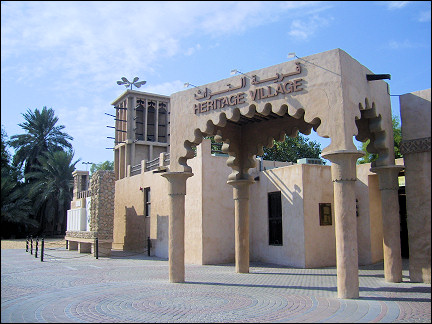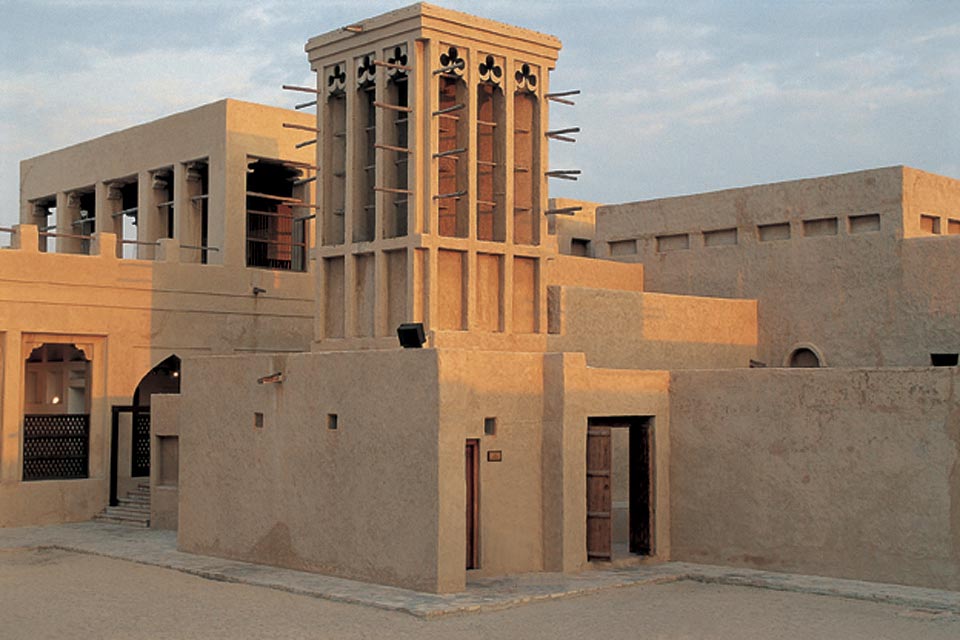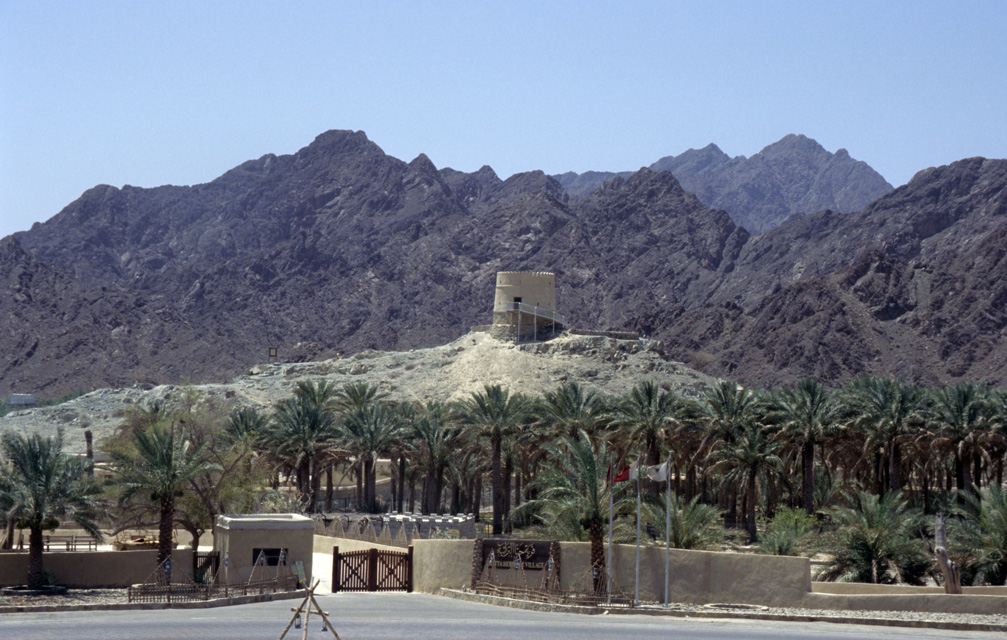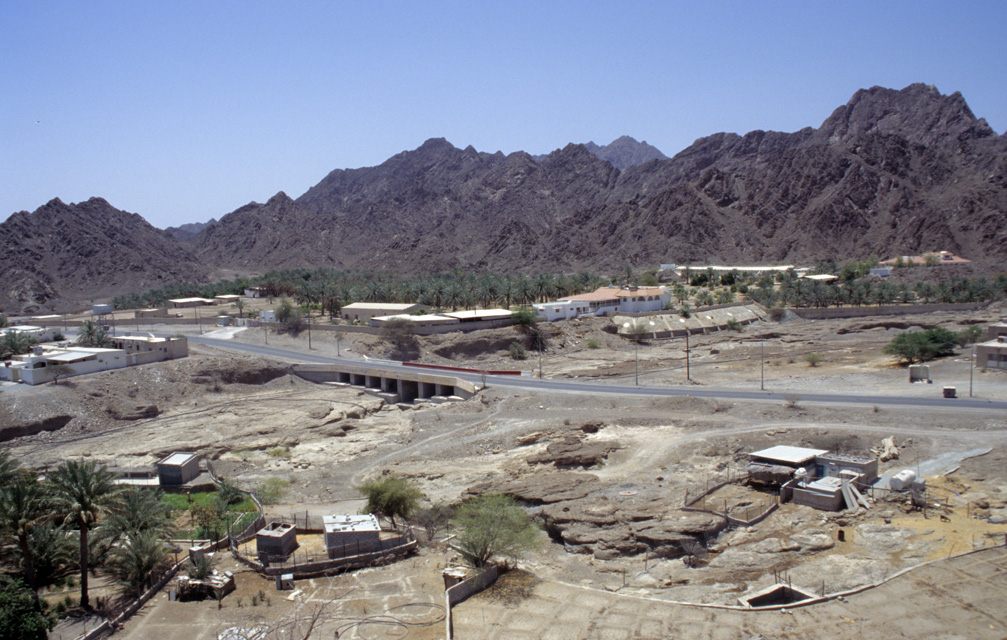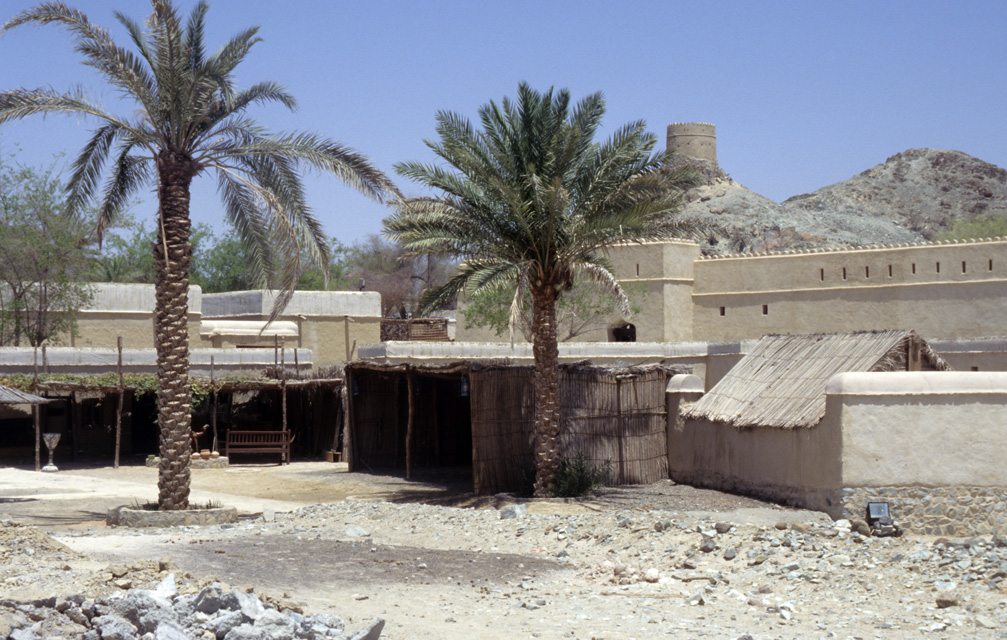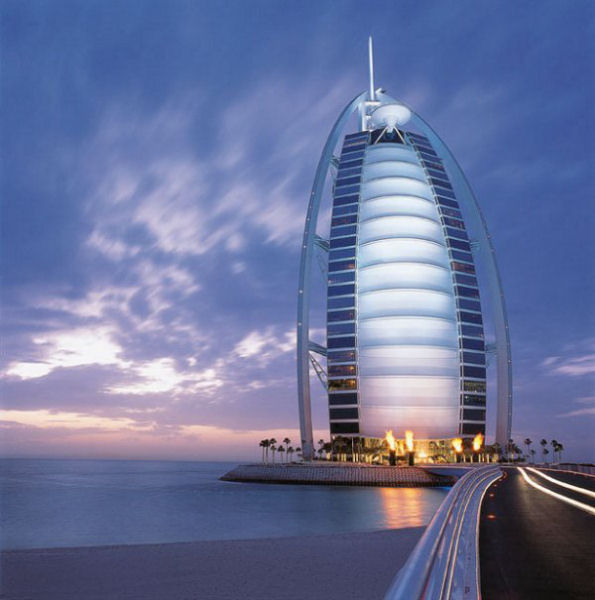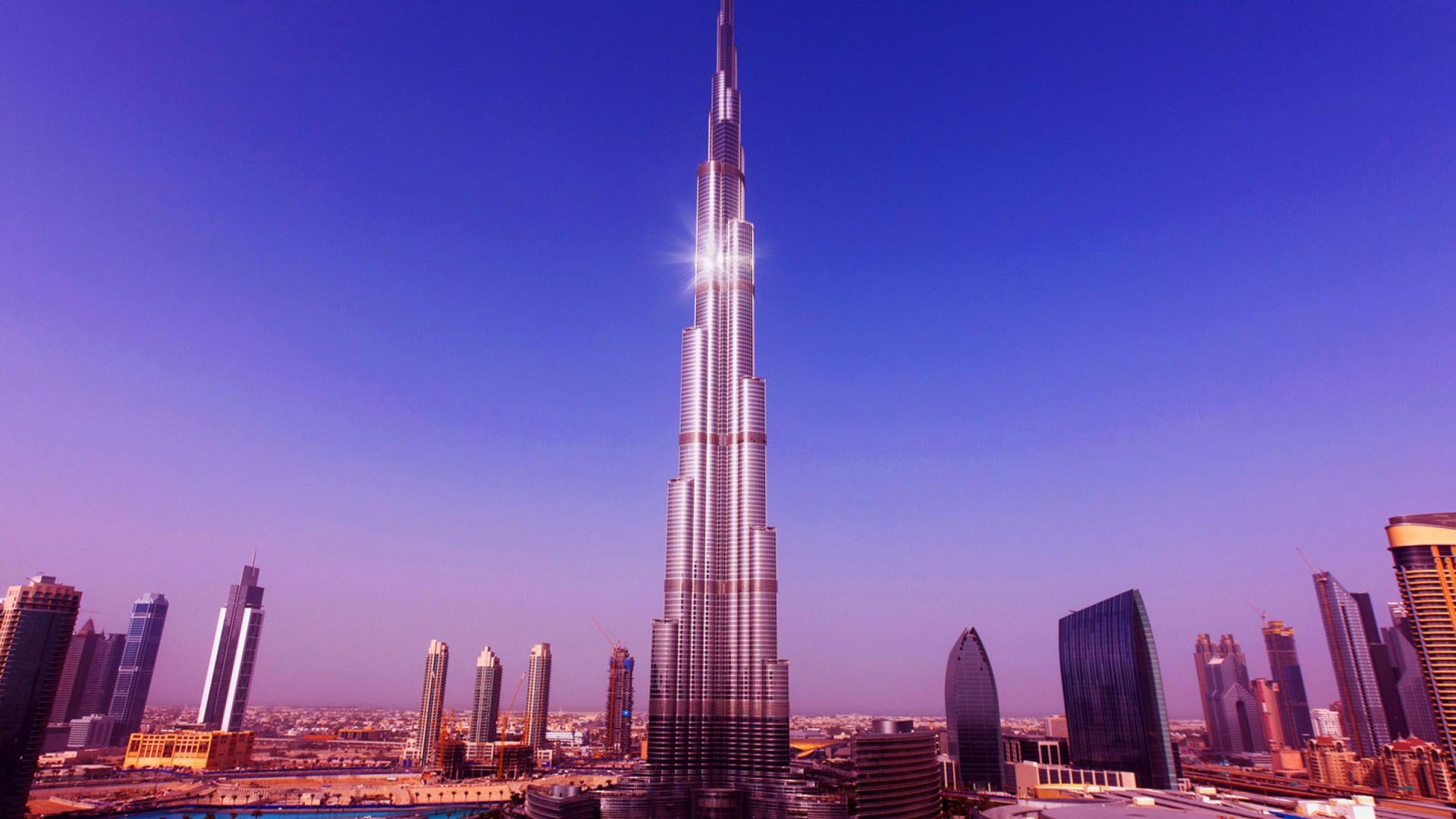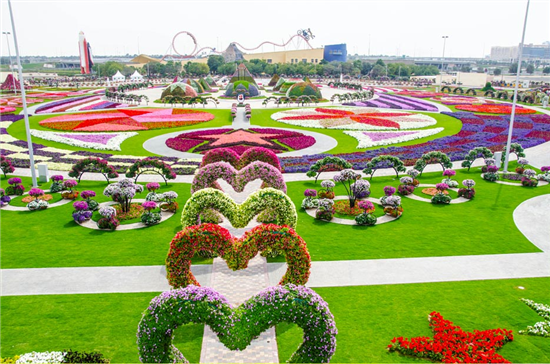United Arab Emirates /Dubai /Dubai
Sight Address : Heritage Village is located in the Shindagha near the creek’s mouth. Edit
Detail InformationEdit
The Hatta Village or Dubai Heritage Village is constructed around an old settlement and is a recreation of a traditional style mountain village set in an oasis. The Dubai Heritage Village helps you discover the old world charm of barasti or palm leaves and mud houses. There’s a large central fort and tower which overlooks the Dubai Heritage Village. Other added attractions of Heritage Villageare falaj, an oasis and vegetated seating areas where you can cool your heels. Signs in Arabic and English will guide visitors to various sections of the Heritage Village which includes an old mosque dating back 200 years and the Al Husen Majlis, where the governor of the Heritage Village received guests and visitors. Al Husen contains the conference room, the governor’s living quarters and weapons room. There are several outdoor meeting places and resting areas in Heritage Village known as Al Hadeera also known as Al Barza in local language of Heritage Villagewhere visitors will be served coffee and dates. Heritage Village of Dubai is mainly Focusing on the Emirate’s past maritime, pearl diving traditions and architecture, the village guide offers you storybook that display some past picture of heritage of Dubai including a tented Bedouin village, ancient armory, wooden chests and cooking utensils.
HistoryEdit
We look 20 and 30 centuries back of Dubai. Hatta village or Dubai heritage village is considered one of the most ancient village locations in the Emirate of Dubai. The Heritage Village or Hatta Village of Dubai is distinguished by its fortified buildings and has about 30 houses which have been fully restored to their old Village style. This Traditional Heritage Village was located near the mouth of the Creek, has been created by potters and weavers. Here the visitor can look back in time and experience some of Dubai’s heritage. In the Dubai Heritage Village there are all traditional houses in the Hatta style, showing a majlis, store, kitchen master bedroom and children’s room. Hatta Village or Dubai Heritage Village is overlooked by two round towers, the Southern and Northern Towers of the Heritage Village are protect the city from external attacks. These towers of the Village were built in the 1880s, When Shaikh Hasher bin Maktoum bin Butti was the Ruler of the Dubai.
Must SeeEdit
Must see
Visiting TimeEdit
Saturday to Thursday: 08:00 am-10:00 pm daily
Friday: 08:00 am-11:00 am and 04:00 pm -10:00 pm
Ramadan: 09:00 pm-12:00 pm
Activities timing: 9:00-12:00
Closed OnEdit
N.A.
Best Season to VisitEdit
November to April.
Best Time To VisitEdit
Morning, Afternoon & Evening.
Time Required for SightseeingEdit
2-3 hours.
Ticket Required : No Edit
Individual National Adult : N.A.
Kids : N.A.
Individual Foreigner Adult : N.A.
Kids : N.A.
Still Photo Camera : N.A.
Video Camera : N.A.
Guide Required : No Edit
Approximate cost: N.A.
Dress Code (If Any) : No Edit
Dress Require: N.A.
Restaurants NearbyAdd / Edit
- Kan Zaman ; Heritage Village, Dubai, United Arab Emirates ; Ph/M – 0 ; Food Serve – Mediterranean, Middle Eastern
How to ReachEdit
Taxi : Taxi is also easily available here, Most visitors will opt for public taxis from the airport, which are readily available just outside arrivals, which use the meter and start at AED 25. If you can’t find one otherwise, you can attempt to call a taxi at 04-2080808
Bus : The Government of Dubai operates a network of buses linking Dubai city with the capitals of the other six emirates of the UAE. The buses run under the name Emirates Express and operate from various bus terminals in Dubai. Buses operate every 40 minutes from 6.20am from both Dubai’s Al Ghubaibah bus station and Abu Dhabi’s main bus station. The two-hour journey cost AED 25. Frequent buses run between Dubai and Sharjah. There are several different routes and buses depart from various bus stations in Dubai including Al Karama, Gold Souq, Baniyas Square, Jebel Ali and Al Ittihad Square. Fares are at Dh7 .
Train : Dubai Metro is composed of at-grade elevated Type 1, Type 2 and Type 3 (T1, T2 and T3, respectively) underground stations (U) and underground transfer station types (UT). Type 1 is the regular at-grade concourse station, Type 2 is a regular elevated concourse station, and Type 3 is an elevated special track station with an extra track to hold a non operational train. Underground transfer stations will be accommodating both the Red and Green lines for easy transfers. Besides these differences, there are four themes used in the interiors of the stations: earth, water, fire and air. Earth stations have a tan-brown colour effects; water has blue-white colour effects; fire has orange-red colour effects; and the air has green colour effects. Single tickets range from Dh2-8.50, or double that for use of the “Gold” first class carriage. Train run every 3-5 minutes from 5:50 AM to Midnight every day except Thursday and Friday, when services are extended to 5:50 AM to 1 AM and limited to 1 PM to Midnight, respectively. All stations are air-conditioned and there’s a large network of feeder buses.
Air : Dubai International Airport (DXB), which is located about 2.5 miles southeast of Dubai, links the emirate to over 200 world destinations by 100 airlines operating about 5,600 flights every week. Terminal 1 of Dubai International Airport serves as a base for international flights while Terminal 3 exclusively caters for Emirates. Terminal 2 on the other hand, is mainly used by smaller airlines operating to Iran, Pakistan and Afghanistan. India can avail flight services from metropolitan cities like Delhi, Mumbai, Kolkata, Chennai, Ahmedabad and Bangalore. Besides Emirates, Jet Airways, Air India, Thai Airways and Indian Airlines are some of the major airlines serving travellers flying to Dubai from India. Most visitors will opt for public taxis from the airport, which are readily available just outside arrivals, which use the meter and start at Dhs 25. Taxis are on the left when you come out of terminal 1.
Airport telephone number: +971 (0) 4 224 5555
Others : By Boat : An easier way of crossing the Dubai Creek is by abra, essentially a small ferry. Abra stations are located along the Creek on both the Bur Dubai and Deira sides, and the system of filling the boats is remarkably efficient. The cross-river trip costs 1 Dirham (AED 1) per passenger, payable to the driver after the boat has left the station, and affords a very picturesque view of the city (not to be missed). Abras set off very regularly, and the service is available round-the-clock.
waterbus : The Waterbus is another option for tourists who want to go by boat but avoid the abra crowd (or the heat). It is a part of Dubai’s public transport system, so again a Red ticket, or any Nol card is required for the journey. Can be purchased at the waterbus station. The waterbus also features a ‘tourist route’ round trip – while it is convenient, it can get quite expensive (Dh50 for an adult, Dh25 for a child).
By Car : There are a countless number of Rent-A-Cars that will provide a mode of transportation for very cheap rates and very little paperwork. An International Driving Permit is not necessarily required, but hire companies may not rent a car without one. Some agencies will hire out cars complete with drivers. Visitors taking advantage of this option will need to make certain that their driver knows his way around as many do not.
Things to CarryEdit
- Carry Camera.
Safety / WarningEdit
- Never take a photograph with a person not in your travelling party in it without asking for permission first.
- Public drunkenness is strictly prohibited, as is drinking and driving.
- Dubai is in a Muslim country, clothing should be modest in order to respect local customs.
HelplineEdit
- Police – 999 / 2292222
- Fire Department – 997
- Ambulance – 999
